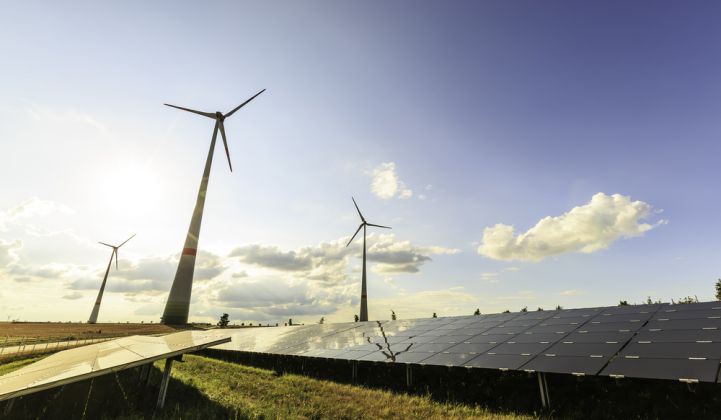After seven years of federal review, multiple votes in Congress and hundreds of protests around the country, President Obama rejected the $7 billion Keystone XL pipeline last Friday.
The “Blockadia” strategy adopted by green groups was remarkably successful; it mobilized millions of Americans to oppose the Keystone expansion project. Now activists are turning their attention to blocking oil and gas production on federal lands, strip mining in Wyoming’s Powder River Basin, and oil drilling off the Atlantic coast.
Tom Steyer wants to add another item to that list. For the billionaire climate activist, the environmental movement needs to be as much about saying “yes” to clean energy as it is about saying “no” to fossil fuels.
“We think energy from the people who were pushing on Keystone should go to demanding people that are running for president or statewide office [to offer] solutions,” said Steyer on a press call this week.
Steyer’s organization, NextGen Climate America, is calling for presidential candidates on both sides of the aisle to outline pathways to achieving a 50 percent renewable energy mix by 2030. “Not agreement with the science, not with vague good intentions, but detailed plans,” Steyer said.
"Offering concrete plans...is one the most powerful ways leaders can move conversation on climate change forward," he added.
Following Obama’s announcement, NextGen published a video praising the Keystone rejection and championing a new phase of the environmental movement focused on clean energy.
“We’re setting our sights higher than a single pipeline,” says the narrator.
To jumpstart the conversation, NextGen released a report on Monday showing that transitioning to a clean energy economy will drive economic growth, create well-paying jobs and reduce Americans’ energy bills.
The economic analysis, conducted by ICF International based on data from E3’s Pathways to Deep Decarbonization in the United States report, examined two routes to reducing emissions 80 percent below 1990 levels by 2050. In the “high renewables case” -- which assumes significant investment in electric vehicles and energy efficiency, in addition to solar and wind generation -- the economy is projected to add 1 million net jobs by 2030 and up to 2 million jobs by 2050.
Not every part of the country will see growth. Two of the nine census regions examined in the study -- two fossil-fuel-heavy regions -- would see some job losses. The report authors acknowledged that action is needed to support workers that are adversely affected by the shift to clean energy.
“To help them adapt, we need to provide dedicated new resources for economic diversification, job creation, job training and other employment services for workers and communities affected by job losses at coal mines and coal-fired power plants,” the authors wrote.
Despite slowing job growth in some regions, researchers determined that the high-renewables case ultimately provides greater overall benefits than the “mixed case,” which assumes a mix of renewables, nuclear, and natural-gas generation with carbon capture and storage.
By 2050, the report finds that there would be nearly twice as many jobs created in the high-renewables scenario than in the mixed scenario, with 1.2 million new jobs in construction alone.
The high-renewables case would also increase household disposable income by as much as $650 by 2050. At the same time, gross domestic product would grow by $145 billion by 2030 and $290 billion by 2050.
According to Dan Lashof, NextGen chief operating officer, these figures are conservative, because the report did not consider the economic costs of inaction on climate change, or the risks to national security.
“The argument that we can’t address climate change without growing our economy is simply not true,” said Steyer. “And we can do it with existing technologies. We don’t have to wait for some new invention to transform the American energy landscape. American business is already innovating and leading the way.”
The U.S. clean energy sector has seen record growth rates. As of August, renewable energy generation totaled 13.2 percent of all U.S. electrical production, not including the contribution of distributed energy resources.
The U.S. has also seen big percentage gains in renewable energy investments. In the third quarter of 2015 compared to the third quarter of 2014, the U.S. saw investments increase by 25 percent to $13.4 billion, according to Bloomberg New Energy Finance.
At the same time, however, publicly traded clean technology companies have seen their stocks plummet in recent months. The Wilder Hill Clean Energy Index, which includes a diverse group of clean energy companies, fell from a recent high of around $62 in April to around $46 this week. Renewable energy YieldCos have been especially hard-hit.
Jeffrey Sachs, director of the Earth Institute at Columbia University, said there’s a “dearth of investment” because of so much uncertainty in the clean energy sector.
“We don’t have a national strategy yet, and so without a national strategy, the signals to investors simply are not very clear,” he said. “What kind of energy system are we going to have?”
It all comes down to demand, said Steyer. Investors are dropping stocks because they’re unsure about the long-term demand for clean energy. “Once we’ve taken that [concern] off the table, because we have a policy driving it, then all of those issues about constancy and certainty go away very quickly.”



